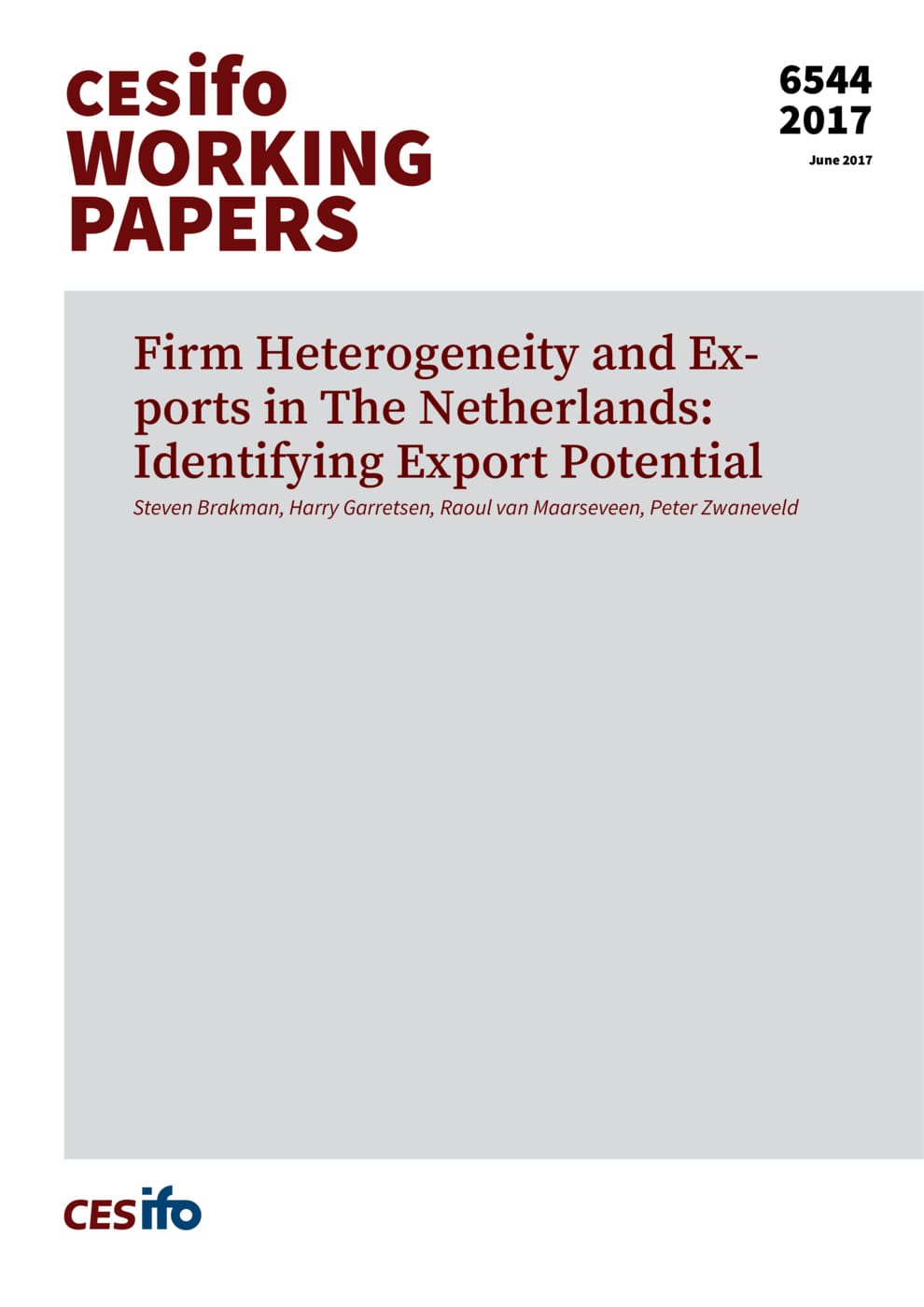Firm Heterogeneity and Exports in The Netherlands: Identifying Export Potential
CESifo, Munich, 2017
CESifo Working Paper No. 6544

Stimulating firms to become exporters is of interest to policy makers, as exporters are in general more productive than non-exporters. However, selecting high export potentials is difficult in practice. The contribution of this paper is to characterize and identify these (high) export potentials. According to the Melitz (2003) model, potential exporters have to be productive enough to overcome the entry costs of foreign markets. Once firms pass this productivity threshold, they all export. Empirical evidence, however, indicates that a substantial share of high-productive firms does not export. In this paper, we focus specifically on this group of high-productive non-exporters. We employ a large micro-dataset for Dutch firms both in services and manufacturing for 2010-2014. Our findings are threefold. First, high productivity is an important, but not a sufficient condition for exporting. Firm size (substitute for productivity), import status, and foreign ownership are also important. Second, firm location is crucial. A location in peripheral areas prevents high productive firms from exporting; especially a location in the Northern part of the Netherlands reduces the probability to export. Third, the manufacturing sector differs from the services sector. Given that the median exporter in our sample is a services firm; this sector should be included in export research.
Trade Policy
Empirical and Theoretical Methods